National
The documentary rocking Vancouver and shocking Canadians
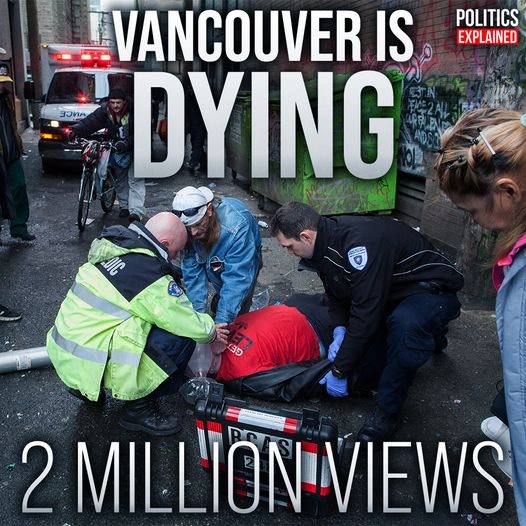
From Aaron Gunn of Politics Explained
SUBSCRIBE: ![]() / aarongunnbc
/ aarongunnbc
SUPPORT ME: https://www.aarongunn.ca/contribute
FOLLOW ME: Instagram: https://www.instagram.com/aarongunnbc Facebook: https://www.facebook.com/aarongunn.ca Twitter: https://www.twitter.com/aarongunn
AARON IS AN INDEPENDENT JOURNALIST, AND ADVOCATE FOR TAXPAYERS AND COMMON SENSE
Aaron is Producer/Director of the hit online series, Politics Explained.
His videos have targeted, among others, the Insurance Corporation of British Columbia (ICBC) for dramatically raising rates on BC drivers; Victoria Mayor Lisa Helps for tearing down the statue of Sir John A. Macdonald; Canada’s Justice System for its treatment of child murderers; and Prime Minister Justin Trudeau for his massive deficits, destructive energy policy and obsession with political correctness.
Throughout, Aaron has demonstrated his commitment to lower taxes, less waste and a stronger Canada. His content, which he writes and produces himself, is funded by the generous contributions of ordinary, taxpaying Canadians. His videos, which are filmed across the country, have together been shared hundreds of thousands of times.
Prior to his work as Spokesperson for BC Proud (2017-19), Aaron worked for the Canadian Taxpayers Federation (CTF) where he founded and became Executive Director of the Generation Screwed initiative, fighting back against government debt and its impact on future generations.
By the end of his tenure at the CTF, Generation Screwed had achieved a considerable online following and established a physical presence at over 30 university campuses across Canada.
Aaron has a Bachelor’s Degree of Commerce from the University of Victoria. He served three years in the Canadian Army Reserves and operated his own company, which he founded at age 15, for over ten years. Victoria, BC is home.
For media requests or to inquire about public speaking, contact Aaron here.
Addictions
Canada’s ‘safer supply’ patients are receiving staggering amounts of narcotics
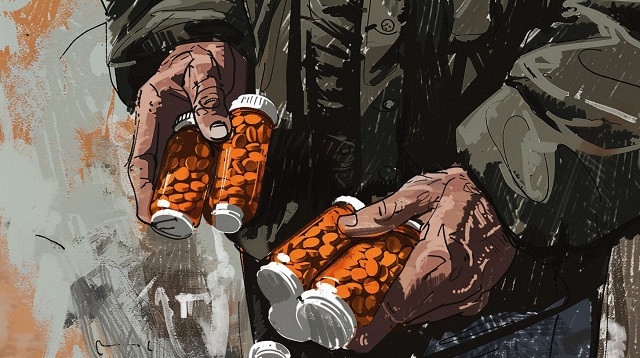
Image courtesy of Midjourney.
|
|
How a Small Population Fuels a Black Market Epidemic, Echoing Troubling Parallels in Sweden
A significant amount of safer supply opioids are obviously being diverted to the black market, but some influential voices are vehemently downplaying this problem. They often claim that there are simply too few safer supply clients for diversion to be a real issue – but this argument is misleading because it glosses over the fact that these clients receive truly staggering amounts of narcotics relative to everyone else.
“Safer supply” refers to the practice of prescribing free recreational drugs as an alternative to potentially-tainted street substances. In Canada, that typically means distributing eight-mg tablets of hydromorphone, an opioid as potent as heroin, to mitigate the use of illicit fentanyl.
There is clear evidence that most safer supply clients regularly sell or trade almost all of their hydromorphone tablets for stronger illicit substances, and that this is flooding communities with the drug and fuelling new addictions and relapses. Just five years ago, the street price of an eight-mg hydromorphone tablet was around $20 in major Canadian cities – now they often go for as little as $1.
But advocates repeatedly emphasize that, even if such diversion is occurring, it must be a minor issue because there are only a few thousand safer supply clients in Canada. They believe that it is simply impossible for such a small population to have a meaningful impact on the overall black market for diverted pharmaceuticals, and that the sudden collapse of hydromorphone prices must have been caused by other factors.
This is an earnest belief – but an extremely ill-informed one.
It is difficult to analyze safer supply at the national level, as each province publishes different drug statistics that make interprovincial comparisons near-impossible. So, for the sake of clarity, let’s focus primarily on B.C., where the debate over safer supply has raged hottest.
According to a dashboard published by the British Columbia Centre for Disease Control, there were only 4,450 safer supply clients in the province in December 2023, of which 4,250 received opioids. In contrast, the 2018/19 British Columbia Controlled Prescription Drug Atlas (more recent data is unavailable) states that there were approximately 80,000 hydromorphone patients in the province that year – a number that is unlikely to have decreased significantly since then.
We can thus reasonably assume that safer supply clients represent around 5 per cent of the province’s total hydromorphone patients – but if so few people are on safer supply, how could they have a profound impact on the black market? The answer is simple: these clients receive astonishing sums of the drug, and divert at an unparalleled level, compared to everyone else.
Safer supply clients generally receive 4-8 eight-mg tablets per day at first, but almost all of them are quickly moved up to higher doses. In B.C., most patients are kept at 14 tablets (112-mg in total) per day, which is the maximum allowed by the province’s guidelines. For comparison, patients in Ontario can receive as many as 30 tablets a day (240-mg in total).
These are huge amounts.
The typical hydromorphone dose used to treat post-surgery pain in hospital settings is two-mg every 4-6 hours – or roughly 12-mg per day. So that means that safer supply clients can receive roughly 10-20 times the daily dose given to acute pain patients, depending on which province they’re located in. And while acute pain patients are tapered off hydromorphone after a few weeks, safer supply clients receive their tablets indefinitely.
Some chronic pain patients (i.e. people struggling with severe arthritis) are also prescribed hydromorphone – but, in most cases, their daily dose is 12-mg or less. The exception here is terminally ill cancer patients, who may receive up to around 100-mg of hydromorphone per day. However, this population is relatively small, so we once again have a situation where safer supply patients are, for the most part, receiving much more hydromorphone than their peers.
Not only do safer supply patients receive incredible amounts of the drug, they also seem to divert it at much higher rates – which is a frequently overlooked factor.
The clandestine nature of prescription drug diversion makes it near-impossible to measure, but a 2017 peer-reviewed study estimated that, in the United States, up to 3 per cent of all prescription opioids end up on the black market.
In contrast, it appears that safer supply patients divert 80-90 per cent of their hydromorphone.
These numbers should be taken with a grain of salt, as there have been no attempts to measure safer supply diversion – harm reduction researchers tend to simply ignore the problem, which means that we must rely on journalistic evidence that is necessarily anecdotal in nature. While this evidence has its limits, it can, at the very least, illustrate the rough scale of the problem.
For example, in London, Ontario, I interviewed six former drug users last summer who said that, of the safer supply clients they knew, 80 per cent sold almost all of their hydromorphone – just one interviewee placed the number closer to 50 per cent. More recently, I interviewed an addiction outreach worker in Ottawa who estimated that 90 per cent of safer supply clients diverted their drugs. These numbers are consistent with the testimony of dozens of addiction physicians who have said that safer supply diversion is ubiquitous.
Let us take a conservative estimate and imagine that only 30 per cent of safer supply hydromorphone is diverted – even this would be potentially catastrophic.
So we can see why any serious attempt to discuss safer supply diversion cannot narrowly focus on patient numbers – to ignore differences in doses and diversion rates is inexcusably misleading.
But we don’t need to rely on theory to make this point, because the recent parliamentary testimony of Fiona Wilson, who is deputy chief of the Vancouver Police Department and president of the B.C. Association of Chiefs of Police (BCACP), illustrates the situation quite neatly.
Wilson testified to the House of Commons health committee earlier this month that half of the hydromorphone recently seized in B.C. can be attributed to safer supply. As she did not specify whether the other half was attributed to other sources, or simply of indeterminate origin, the actual rate of safer supply hydromorphone seizures may actually be even higher.
As, once again, safer supply clients constitute roughly 5 per cent of the total hydromorphone patient population, Wilson’s testimony suggests that, on a per capita basis, safer supply patients divert at least 18 times more of the drug than everyone else.
This is exactly what one would expect to find given our earlier analysis, and these facts, by themselves, repudiate the argument that safer supply diversion is insignificant. When a small population is at least doubling the street supply of a dangerous pharmaceutical opioid, this is a problem.
The fact that so few people can cause substantial, system-wide harm is not unprecedented. In fact, this exact same problem was observed in Sweden, which, from 1965-1967, experimented with a model of safer supply that closely resembled what is being done in Canada today. A small number of patients – barely more than a hundred – were given near-unlimited access to free recreational drugs under the assumption that this would keep them “safe.”
But these patients simply sold the bulk of their drugs, which caused addiction and crime rates to skyrocket across Stockholm. Commentators at the time referred to safer supply as “the worst scandal in Swedish medical history,” and, even today, the experiment remains a cautionary tale among the country’s drug researchers.
It is simply wrong to say that there are too few safer supply clients to cause a diversion crisis. People who make this claim are ignorant of contemporary and historical facts, and those who wish to position themselves as drug experts should be mindful of this, lest they mislead the public about a destructive drug crisis.
This article was originally published in The Bureau, a Canadian publication devoted to using investigative journalism to tackle corruption and foreign influence campaigns. You can find this article on their website here.
Addictions
City of Toronto asks Trudeau gov’t to decriminalize hard drugs despite policy’s failure in BC
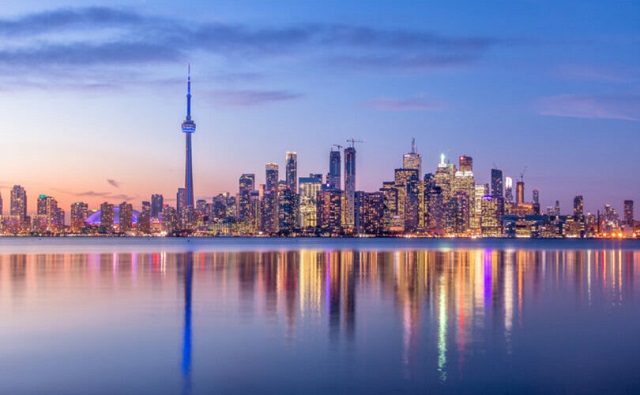
From LifeSiteNews
“Criminalizing the possession of drugs for personal use leads to discrimination and stigma, and contributes to people hiding their drug use from their physicians, friends, family, colleagues, and community”
The City of Toronto is asking Prime Minister Justin Trudeau’s government to decriminalize hard drugs.
In a March letter, Toronto city officials appealed to the Trudeau government to legalize all quantities of crack, cocaine, heroin, meth, and other hard drugs, despite warnings that it will bring increased chaos and violence to the city. Its reasoning is that people look askance at drug abuse and drug abusers, who then attempt to hide their habit.
“The evidence demonstrates that criminalizing the possession of drugs for personal use leads to discrimination and stigma, and contributes to people hiding their drug use from their physicians, friends, family, colleagues, and community,” the document claimed.
The letter, penned by Medical Officer of Health Dr. Eileen de Villa, City Manager Paul Johnson, and Chief of Police Myron Demkiw requested that the Trudeau government decriminalize hard drugs for young people as well as adults. The application places no limit on the quantity of drugs which would be legally obtained.
Toronto is already seeing a rise in crime since the election of Toronto mayor Olivia Chow. Canadians have pointed out that Toronto is dealing with several issues, without adding the decriminalization of hard drugs,
“Trudeau must reject Toronto’s application to allow public use of crack, cocaine, heroin, & other hard drugs,” Conservative Party leader Pierre Poilievre wrote on X, formerly known as Twitter.
“His dangerous policy cannot bring the same chaos, death & destruction to more Canadian cities,” he added.
Trudeau must reject Toronto's application to allow public use of crack, cocaine, heroin, & other hard drugs.
His dangerous policy cannot bring the same chaos, death & destruction to more Canadian cities. pic.twitter.com/hG5h9lsWPq
— Pierre Poilievre (@PierrePoilievre) May 1, 2024
Poilievre’s condemnation was echoed by Ontario Premier Doug Ford who promised, “I will fight this tooth and nail. This is the wrong way to go.”
Poilievre further explained that Canadians have already seen the dystopian effects of the decriminalization of hard drugs in British Columbia, which “has caused chaos in hospitals, playgrounds, parks, and public transport.”
READ: British Columbia should allow addicts to possess even more drugs, federal report suggests
Beginning in early 2023, Trudeau’s federal policy, in effect, decriminalized hard drugs on a trial-run basis in British Columbia.
Under the policy, the federal government began allowing people within the province to possess up to 2.5 grams of hard drugs without criminal penalty, but selling drugs remained a crime.
The province’s drug policy has been widely criticized, especially after it was found that the province broke three different drug-related overdose records in the first month the new law was in effect.
Last week, BC Premier David Eby finally admitted that the province’s ‘safe supply’ program was a failure and called on the Trudeau government to reverse the program. However, Trudeau has yet to respond to the province’s appeal for help.
“Safe supply“ is the term used to refer to government-prescribed drugs that are given to addicts under the assumption that a more controlled batch of narcotics reduces the risk of overdose. Critics of the policy argue that giving addicts drugs only enables their behavior, puts the public at risk, and disincentivizes recovery from addiction. Where “safe supply” has been implemented, it has not reduced the number of overdose deaths. It has sometimes even increased it.
The effects of decriminalizing hard drugs in parts of Canada have been exposed in Aaron Gunn’s recent documentary Canada is Dying, and in the British Telegraph journalist Steven Edginton’s mini-documentary, Canada’s Woke Nightmare: A Warning to the West.
Gunn says he documents the “general societal chaos and explosion of drug use in every major Canadian city.”
“Overdose deaths are up 1,000 percent in the last 10 years,” he said in his film, adding that “[e]very day in Vancouver four people are randomly attacked.”
Even Liberals have begun admitting that Trudeau’s drug program has not helped addicts but only added to their problems.
In April, Liberal MP Dr. Marcus Powlowski testified that violence from drug users has become a problem in Ottawa, especially in areas near the so-called “safe supply” centres which operate within blocks of Parliament Hill.
“A few months ago I was downtown in a bar here in Ottawa, not that I do that very often, but a couple of colleagues I met up with, one was assaulted as he was going to the bar, [and] another one was threatened,” said Powlowski.
“Within a month of that, I was returning down Wellington Street from downtown, the Rideau Centre, and my son who is 15 was coming after me,” he continued. “It was nighttime, and there was someone out in the middle of the street, yelling and screaming, accosting cars.”
RELATED: Liberal MP blasts Trudeau-backed ‘safe supply’ drug programs, linking them to ‘chaos’ in cities
-

 Alberta2 days ago
Alberta2 days agoAlberta threatens to fight Trudeau government restrictions on Canada’s plastics industry
-
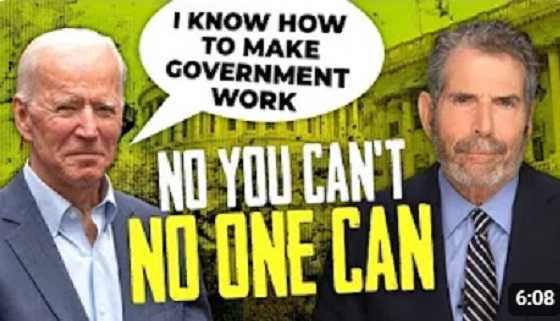
 John Stossel1 day ago
John Stossel1 day agoWhy Biden’s Just Wrong: NO ONE “Knows How to Make Government Work.”
-

 Automotive2 days ago
Automotive2 days agoCanadian interest in electric vehicles falls for second year in a row: survey
-

 Business1 day ago
Business1 day agoWEF panelist suggests COVID response accustomed people to the idea of CBDCs
-

 COVID-191 day ago
COVID-191 day agoPeckford: Hallelujah! Supreme Court of Canada to hear Newfoundland and Labrador charter case
-
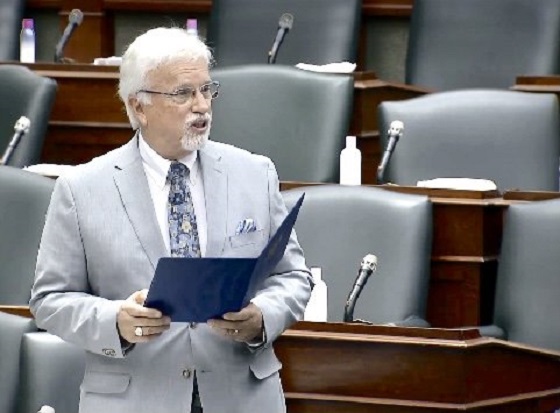
 COVID-192 days ago
COVID-192 days agoFormer Canadian lawmaker has no regrets about refusing COVID shot despite losing his job
-
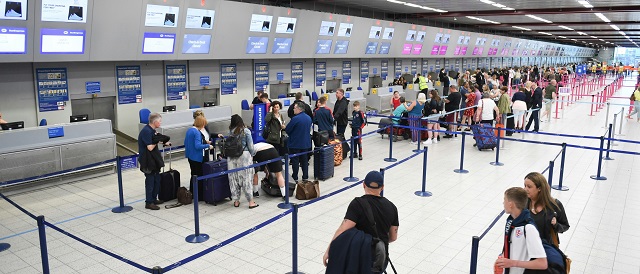
 illegal immigration1 day ago
illegal immigration1 day agoFlight Docs Reveal Which Cities Are Receiving Migrants Under Biden’s Parole Program
-

 Fraser Institute2 days ago
Fraser Institute2 days agoFederal government’s fiscal record—one for the history books






